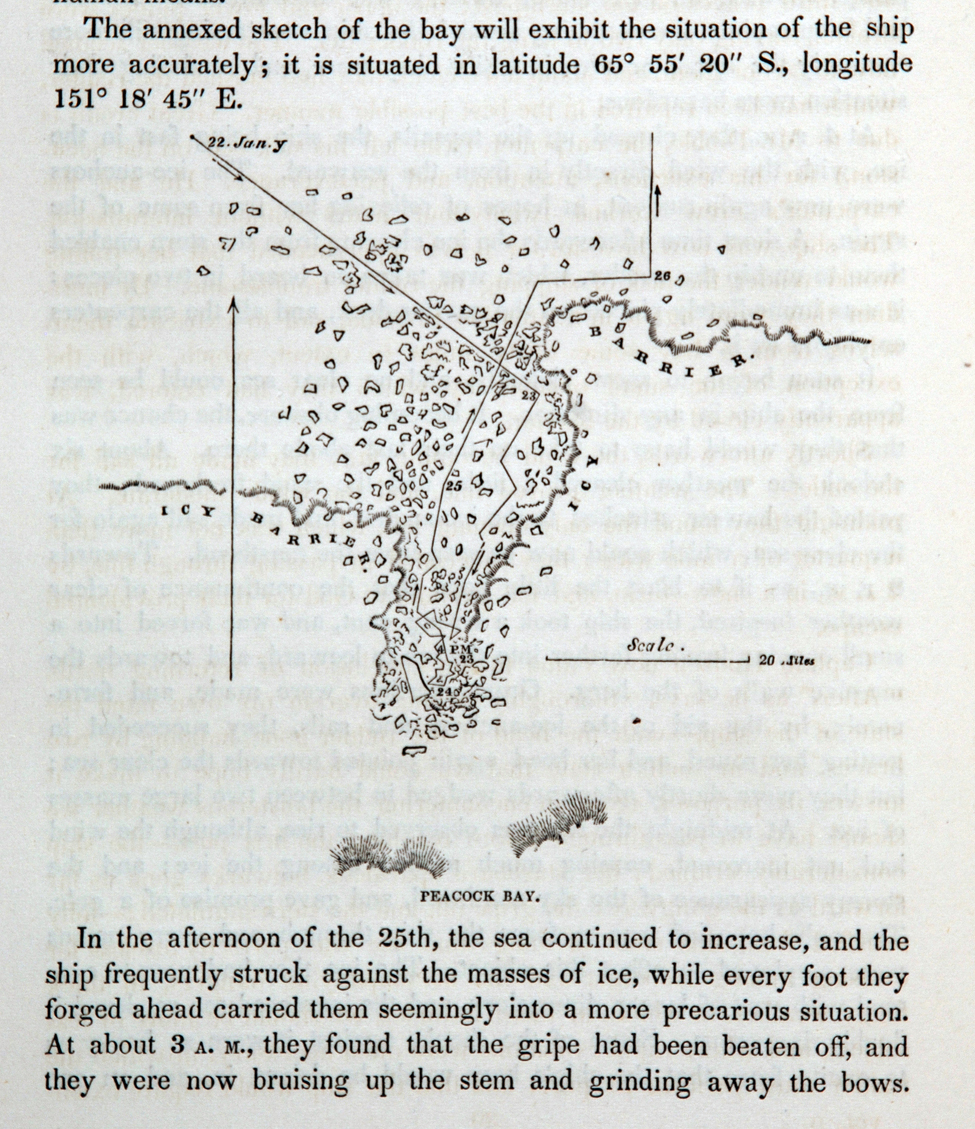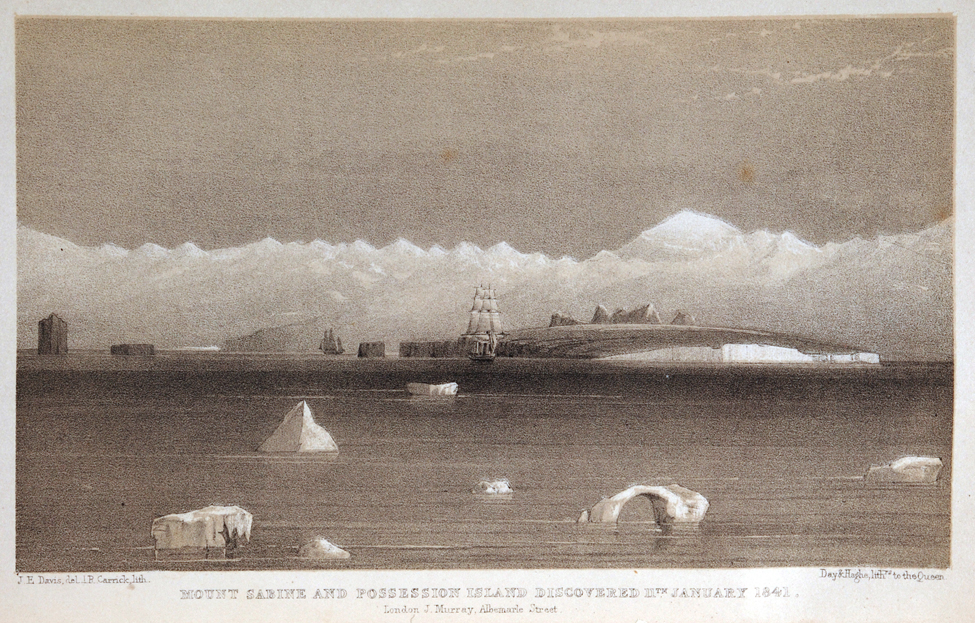Case 3
- Exploring the unknown south

Charles Wilkes. Narrative of the United States Exploring Expedition, During the Years 1838, 1839, 1840, 1841, 1842. Philadelphia: Lea & Blanchard, 1845. Five volumes (plus atlas), volume two displayed.
The five-year exploratory voyage led by Charles Wilkes (1798–1877) was the first of its kind for the United States and the last American expedition to visit the Antarctic region until Richard E. Byrd (1888–1957) in 1928. Its group of six ships set sail in 1838, rounded the Tierra del Fuego archipelago off the southern tip of South America to Sydney, Australia, and then journeyed on to the Antarctic in December 1839. The Americans surveyed the Antarctic Peninsula and eastern Antarctica, measured the ocean’s temperature, currents and winds, and discovered the ‘Termination Barrier’ (now known as the ‘Shackleton Ice Shelf’).

Charles Wilkes. Narrative of the United States Exploring Expedition, During the Years 1838, 1839, 1840, 1841, 1842. Philadelphia: Lea & Blanchard, 1845. Five volumes (plus atlas), volume two displayed.
Open image in new window

Sir James Clark Ross. A Voyage of Discovery and Research in the Southern and Antarctic Regions, During the Years 1839–43. London: John Murray, 1847
Sir James Clark Ross (1800–1862) was well served by the experience he gained on expeditions to the Arctic between 1818 and 1827. Twelve years later, Ross was in the Antarctic making geographical and magnetic observations from 1839 to 1843. He discovered Victoria Land, McMurdo Sound, Mount Erebus, what became known as the Ross ice barrier, and other features. Although Ross did not reach the south magnetic pole, much important magnetic observation was carried out and gradually published over the next twenty-five years.
By the time Ross’s expedition ships Erebus and Terror had departed Antarctic waters, they had completed mapping the area they called ‘South Victoria’, adjacent to what was later named the Ross Sea.

Sir James Clark Ross. A Voyage of Discovery and Research in the Southern and Antarctic Regions, During the Years 1839–43. London: John Murray, 1847
Open image in new window


